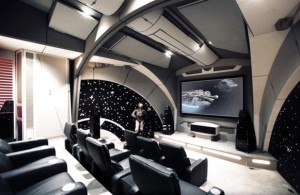
Many Greenwich Village homeowners contemplating their first home theater installation can quickly get lost in the confusion of the seemingly endless technologies and acronyms involved with the process. But the Immersa experience should make your life simpler, not more complicated. That’s why we’ve put together this guide to help you understand some of the things to pay attention to when choosing a video display. Read on to learn more about how 4K UHD can completely change the way you look at your home theater.
See Also: Get Your Immersa Home Theater Experience Started Right With These Basics
Ultra-High Definition
What is Ultra High Definition and why does it matter? It’s a common question from many of our clients. Plenty of people still remember purchasing their last major TV or projector upgrade, when 1080p HD came on the market just a few years ago. Well, UHD offers nearly four times the resolution of the now standard HD, meaning your images are clearer and more detailed than ever before.
High Dynamic Range
One of the more compelling reasons to upgrade to Ultra HD is high dynamic range (HDR). UHD refers to the number of pixels, sort of like a high thread count sheet. It’s more densely packed, and, therefore higher quality.
HDR, however, is like the material used in each thread. It refers to the gradients of visible color between the blackest black and the whitest white. With a greater visible dynamic range, the colors in the display have a greater detail. The result is a display that looks more like a window than a digital image.
High Frame Rate
Similarly to HDR, high frame rate (HFR) is an essential part of a modern home theater’s video display. If you want action and movement that is as crisp-looking as a still life painting, you’re going to want the benefits of HFR compatibility.
Why is that important? The frame rate is all about motion. And if you’re a big fan of sports, like the upcoming MLB season or the NBA finals, you’ll need a display that can keep up.
Typically, a movie is shot and played back at 24 frames per second (fps). That’s part of what makes a film look cinematic. Alternately, sports tend to be shot and broadcast in 60 fps, because detail is pivotal and capturing motion is essential. HFR allows for even higher frame rates to be shot and played back, making the moving image much clearer.
Are you ready to enjoy your home theater display with the clarity of UHD? Contact us today.
